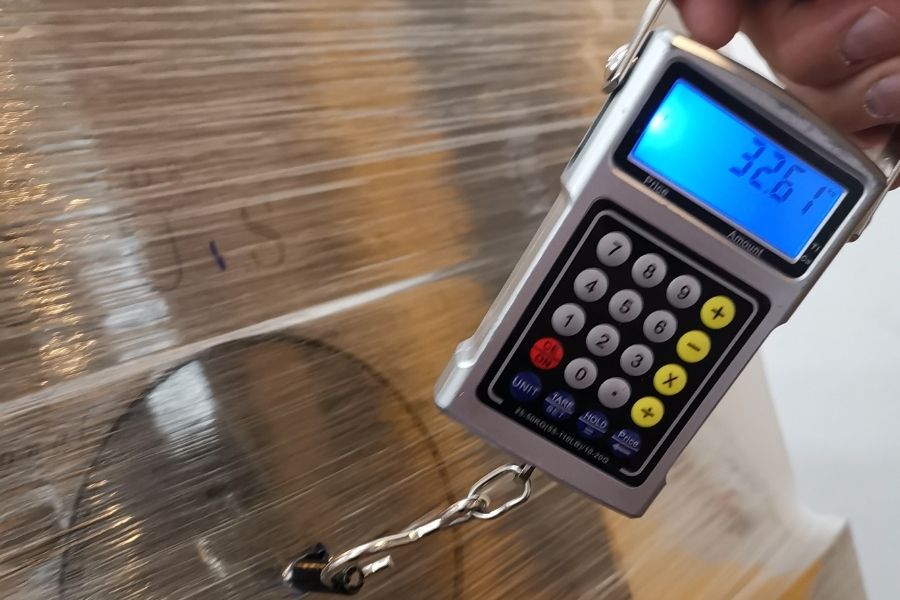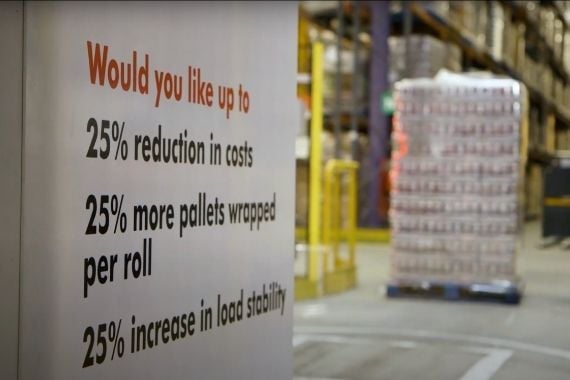Problems with pallet wrapping machines are as numerous as the companies who use them. There are, however, a few problems which most managers have faced at some point regardless of their machine or operation.
Here, we’ll explore the most common problems faced with pallet wrapping machines and provide simple solutions. Let’s get started.
Problem 1: Film snapping
We’ve all experienced it: film is snapping in your machine. It’s worked in the past; you’ve not changed anything. It should work, but it doesn’t.
Solutions
If your film is snapping, it’s probably down to two reasons:
- The film has changed in some way without you knowing, or,
- Something on your machine has changed.
Let’s explore both in more detail.
If film is snapping, it is no longer fit for purpose. It’s worth double-checking that your film specs are right for your machine and operation; if in doubt, read our blog 'Why does my machine film keep breaking?' with expert tips on how to stop this happening, or speak to an expert.
You could, for example, be using a 20mu film where you should be using 12mu. This means your machine's stretch is too strong for the film you’re using, causing it to snap.
Similarly, a machine that isn’t set up right could snap your film. The tension could be too high for either the power stretch at the start or when the film is applied to the pallet. If your machine’s tension is too high, the film will snap, tear or puncture, resulting in unfinished and unstable pallets, not to mention wasted plastic.
To rectify this, you could change the settings on your machine to work with your film, such as adjusting your tension. If you do this and the pallet still isn’t right, you need to change your film.
Problem 2: Film that isn’t stretching enough
If you work with power stretch machines and films, the power stretch facility on the machine needs to be working correctly. Machines stretch to provide wrapping efficiency and economy; if your machine isn’t stretching correctly, it will lay too much film and cost you a fortune, especially with rising plastic costs.
Solutions
Like above, it’s important to check your machine settings to make sure they’re correct. Beyond this, annual or bi-annual services will ensure your machine is working efficiently. If done in conjunction with your film supplier’s benchmarking, the cost of servicing your machine will be paid back in film savings. This leads us to our last problem and solution.
Problem 3: Lack of maintenance and servicing
As with any machine, moving parts will deteriorate over time. Without maintenance, this will cause severe problems. Here are the most common issues caused by poor servicing.
1) Power stretch rollers
Power stretch rollers generally have fixed gears; these gears can slip over time, meaning incorrect stretching ratios and reduced economy.
2) Broken tensioning buttons or dials
With older machines, it's not uncommon for tensioning buttons to fail. It’s also pretty common for operators to try and work around a broken tensioning system.
3) Mast-bed motor and chain
Both the mast-bed motor and the chain that it pulls can break if not properly maintained.
Let’s summarise
The common problems with pallet wrapping machines are usually down to three reasons:
- Incorrect film
- Incorrectly set up machine
- Poor maintenance resulting in deteriorating or broken parts
The solutions are quite simple:
- Get a new machine
- Maintain the machine
- Feed your machine the right film
Ultimately, machine upgrades can solve most of the problems managers face. Newer models will save you money through increased efficiency and produce more secure pallets.
For most manufacturing plants, semi-automatic stretch wrappers are relatively inexpensive; it might be worth upgrading instead of keeping older machines alive.
Still have questions or problems?
Speak to our expert team; we live and breathe packaging.






